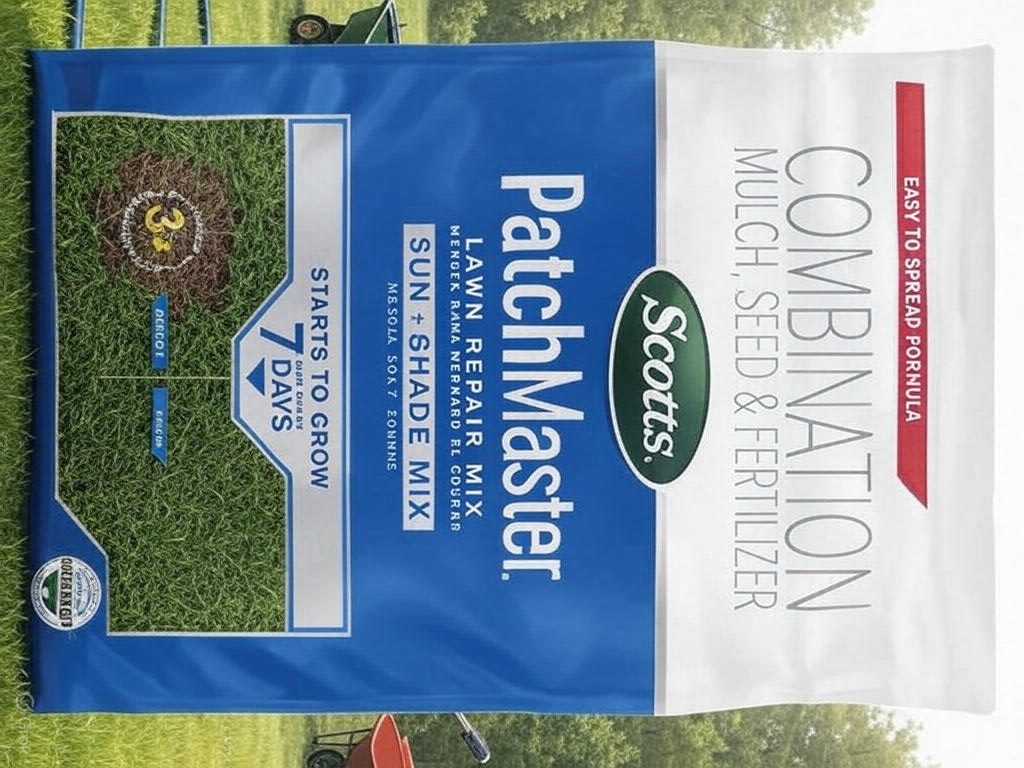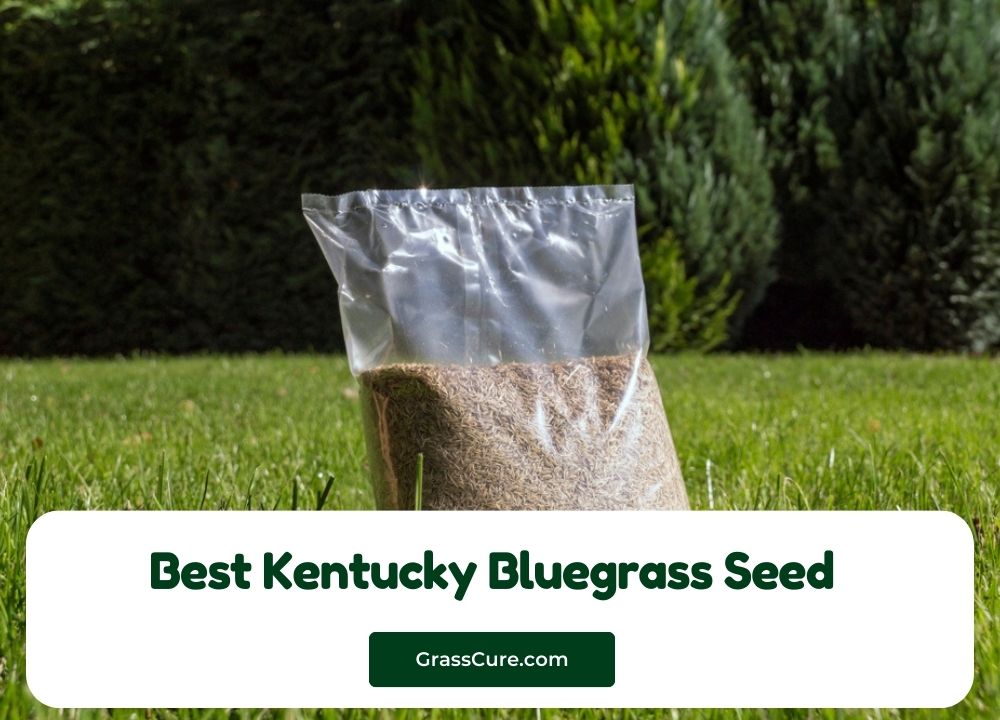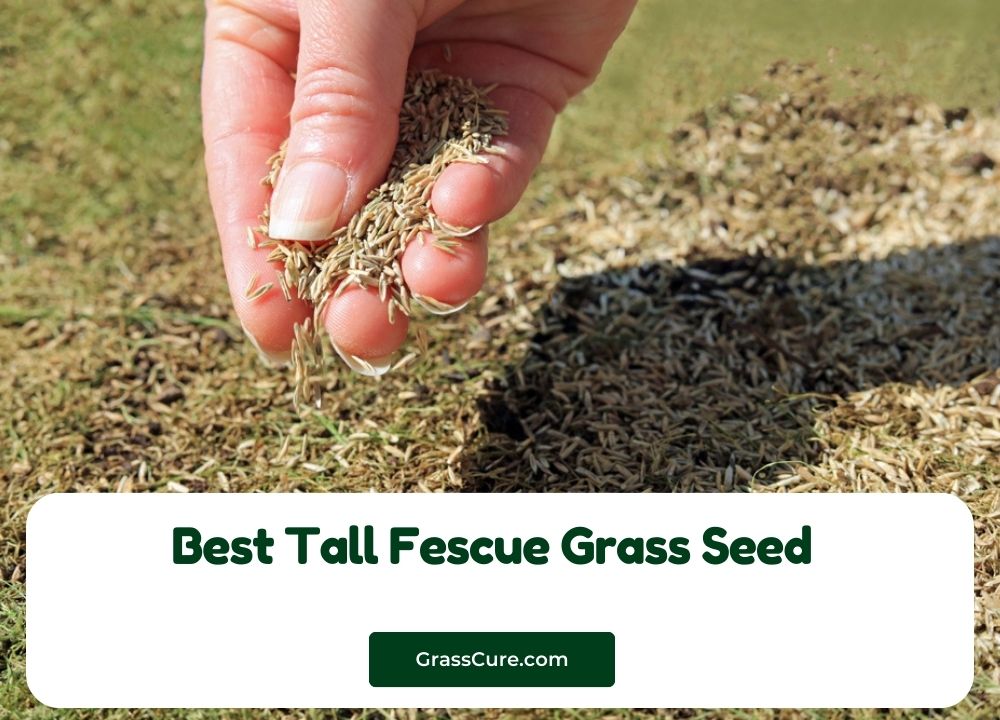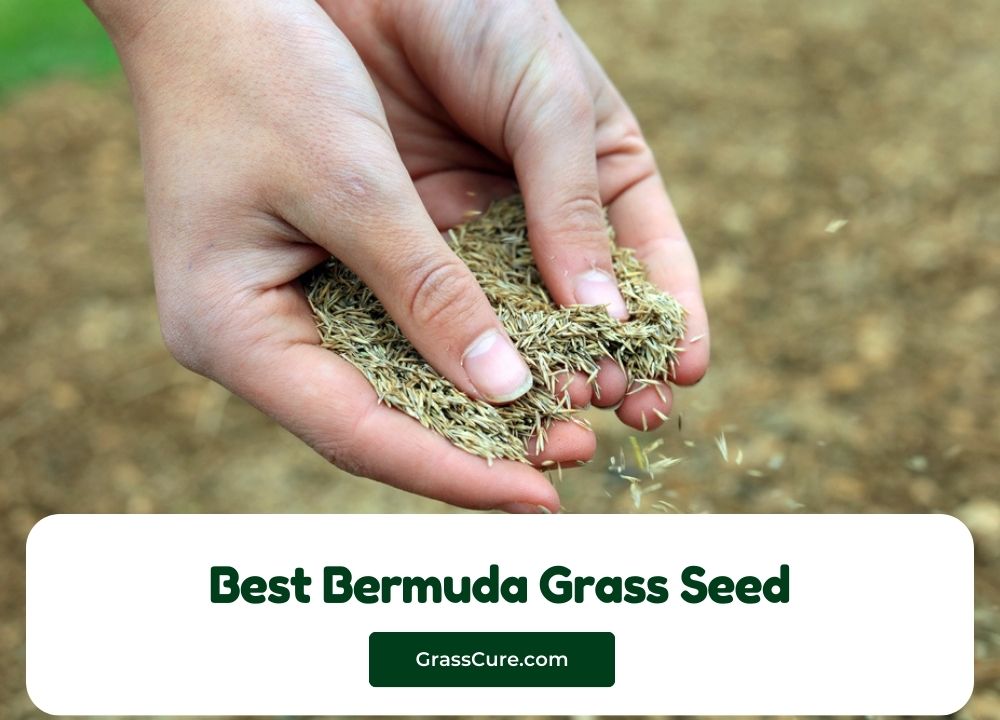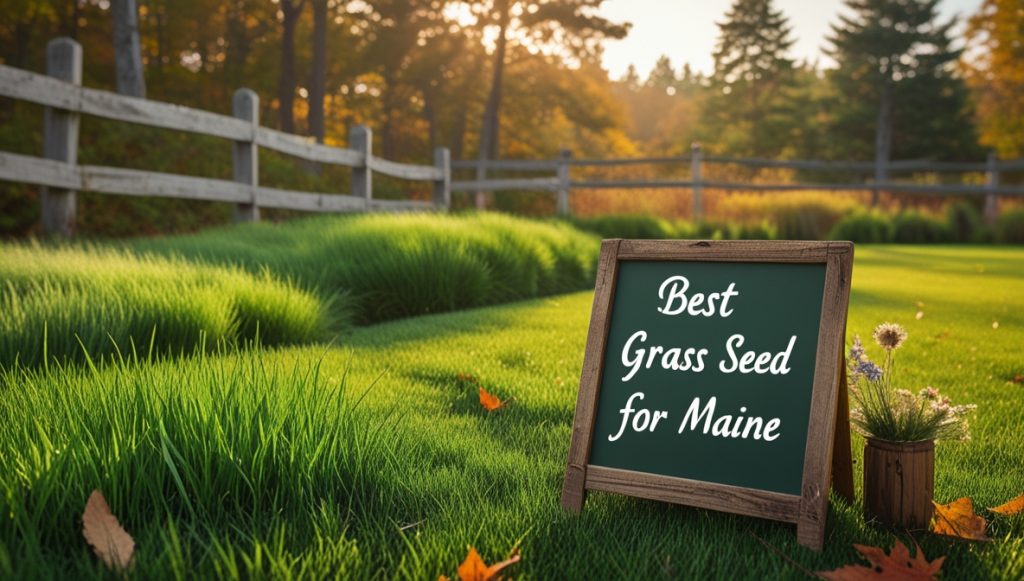The harsh conditions of the Southwest present unique challenges for lawn care enthusiasts. Hot temperatures, limited rainfall, and alkaline soils make growing and maintaining a lush lawn difficult but not impossible. This comprehensive guide explores the best grass seed and mulch for Southwest conditions, helping you achieve that perfect lawn despite the challenging climate.
Contents
Understanding Southwest Growing Conditions
The American Southwest encompasses Arizona, New Mexico, parts of California, Nevada, Utah, Colorado, and Texas. This region experiences:
- Hot summers with temperatures regularly exceeding 100°F
- Limited and unpredictable rainfall
- Low humidity
- Intense UV radiation
- Alkaline soils with pH levels often above 7.5
- Water restrictions in many areas
These conditions create specific needs for successful lawn establishment. Grass varieties must tolerate heat, drought, and alkaline conditions while mulch needs to conserve precious moisture and protect soil from extreme temperatures.
Best Grass Types for Southwest Lawns
Warm-Season Grasses
Warm-season grasses thrive in hot temperatures between 80-95°F and go dormant (turn brown) during cooler months. These varieties are ideal for most Southwest regions:
Bermudagrass – The gold standard for Southwest lawns. It handles intense heat, drought, and heavy foot traffic while requiring minimal water once established. Bermudagrass grows rapidly during summer months, creating a dense turf that crowds out weeds naturally.
Buffalograss – A native North American grass requiring minimal maintenance. Buffalograss needs as little as 1/4 the water of traditional turf grasses. Its blue-green color and fine texture create an attractive lawn that rarely needs mowing.
Zoysia – Forms a dense, carpet-like lawn resistant to weeds and drought. Zoysia establishes more slowly than Bermudagrass but offers superior cold tolerance, making it ideal for higher-elevation Southwest areas.
Cool-Season Grasses
For higher elevations or areas with milder summers, these cool-season grasses perform well:
Tall Fescue – Deep root systems allow tall fescue to access subsurface moisture during drought periods. Modern varieties offer improved heat tolerance while maintaining good color year-round in transitional Southwest climates.
Fine Fescue – Requires minimal fertilizer and water. Fine fescue varieties handle shade better than most warm-season grasses, making them suitable for partially shaded Southwest lawns.
Mulch Options for Southwest Gardens
Proper mulching significantly improves lawn establishment in Southwest conditions by:
- Conserving soil moisture
- Moderating soil temperatures
- Preventing erosion
- Suppressing weeds
- Adding organic matter as it decomposes
Organic Mulch Options
Wood Chips/Bark – Excellent for water retention but can blow away in strong winds. Best used in protected areas or mixed with heavier materials.
Compost – Adds valuable nutrients while improving soil structure. Ideal for preparing soil before seeding but less effective as a standalone mulch in extreme heat.
Straw – Lightweight and cost-effective, straw provides good seed protection during germination. However, it breaks down quickly in hot conditions and may contain weed seeds.
Paper Mulch – Biodegradable and effective at moisture retention. Paper mulches often contain tackifiers that help them stay in place during wind and rain events.
Inorganic Mulch Options
Gravel/River Rock – Permanent solution that reflects heat away from soil. Effective in xeriscape designs but less suitable for traditional lawns.
Rubber Mulch – Made from recycled tires, rubber mulch lasts indefinitely and helps retain soil moisture. However, it can increase soil temperature significantly.
Landscape Fabric – Creates a barrier against weeds while allowing water to reach soil. Can be used beneath organic mulches for enhanced weed control.
Top Grass Seed and Mulch Products for Southwest Lawns
Let’s examine five excellent products designed specifically for the challenging Southwest growing conditions:
1. Scotts PatchMaster Lawn Repair Mix Sun + Shade Mix
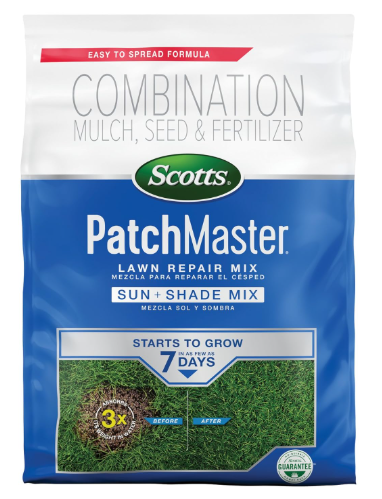
This all-in-one solution combines grass seed, fertilizer, and mulch, making it perfect for repairing bare spots in existing lawns. The proprietary seed mix includes varieties selected for sun and shade tolerance.
Key Features:
- Contains multiple grass varieties for adaptability
- Mulch component retains up to 4x its weight in water
- Fertilizer promotes quick establishment
- Works in both sunny and partially shaded areas
- Covers up to 85 square feet
Best For: Repairing damaged areas in established lawns where both sunny and shaded conditions exist.
Performance in Southwest Conditions: While not specifically formulated for extreme Southwest heat, this product works well in transitional zones and higher elevations. The moisture-retaining mulch helps seeds survive through germination, often the most vulnerable stage in hot climates.
2. Scotts EZ Seed Patch & Repair Sun and Shade
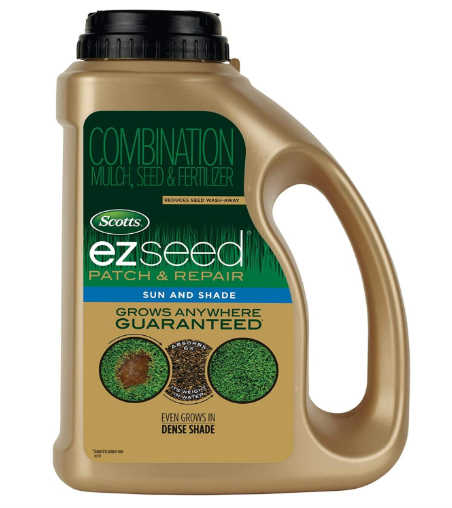
This innovative product combines seed, fertilizer, and a special mulch in one package. The mulch expands when watered, creating a protective layer that holds moisture around seeds.
Key Features:
- Tackifier prevents seed washaway during irrigation
- Absorbs and retains water to support germination
- Contains starter fertilizer for early growth
- Covers up to 85 square feet
- Works in various light conditions
Best For: Small lawn repairs in areas with varying sun exposure.
Performance in Southwest Conditions: The water-absorbing mulch makes this product valuable in dry Southwest conditions. However, daily watering remains essential during establishment, making it less suitable for severe water restriction areas.
3. Scotts EZ Seed Patch and Repair Bermudagrass
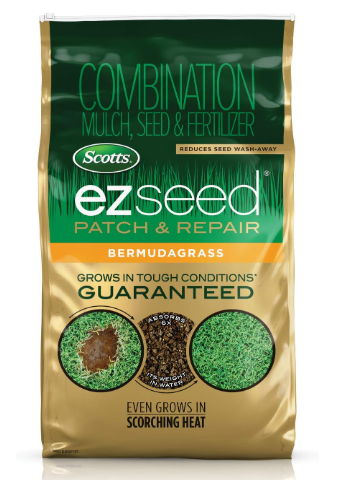
This specially formulated version features Bermudagrass, the quintessential Southwest lawn grass. The combination of seed, mulch, and fertilizer creates an ideal environment for establishing this heat-loving grass.
Key Features:
- Contains 100% Bermudagrass seed
- Grows in temperatures up to 120°F
- Includes tackifier to prevent seed washaway
- Fertilizer promotes deep root development
- Covers up to 225 square feet
Best For: Establishing or repairing Bermudagrass lawns in hot, sunny Southwest locations.
Performance in Southwest Conditions: This product stands out as the best option for most Southwest lawns. The Bermudagrass seed thrives in hot conditions, while the mulch component helps seeds survive until established. The larger coverage area makes it economical for bigger repair projects.
4. Scotts Turf Builder Rapid Grass Tall Fescue Mix
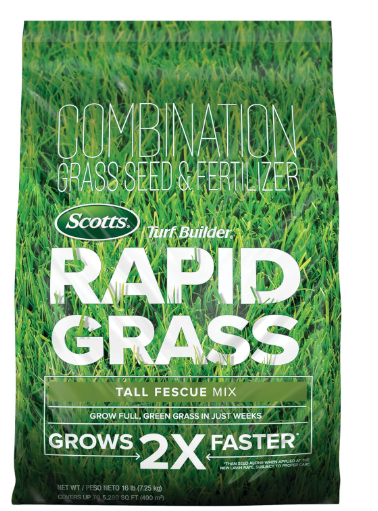
For higher elevation Southwest regions with cooler temperatures, this tall fescue mix offers quick results. The combination of seed and fertilizer promotes fast germination and establishment.
Key Features:
- Visible results in as little as 21 days
- Contains heat and drought-tolerant tall fescue varieties
- Professional-grade seed quality
- Covers up to 445 square feet
- Includes micronutrients for root development
Best For: Establishing new lawns or overseeding existing ones in transitional Southwest climates.
Performance in Southwest Conditions: Tall fescue’s deep root system makes it relatively drought-tolerant once established. This product works well in Southwest regions with milder summers or properties with adequate irrigation. The quick germination helps overcome the challenging establishment period.
5. Scotts EZ Seed Dog Spot Repair Sun and Shade
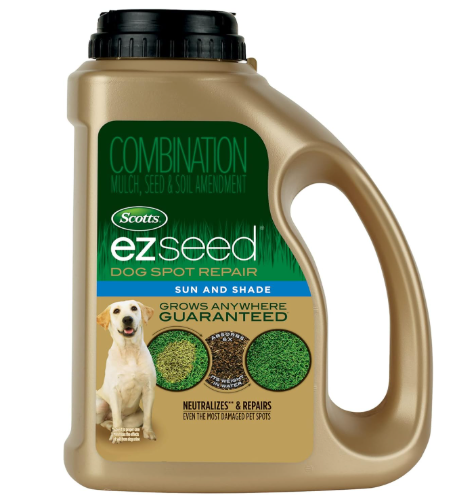
Pet owners face unique lawn challenges, especially when dog urine creates dead spots. This specialized product addresses both the physical damage and soil chemistry issues.
Key Features:
- Contains soil amendments to neutralize dog urine
- Absorbent mulch protects seeds during germination
- Includes drought-tolerant seed varieties
- Works in both sun and shade
- Covers approximately 45 square feet
Best For: Repairing specific lawn areas damaged by dog urine.
Performance in Southwest Conditions: The specialized formulation helps overcome both the Southwest growing challenges and pet damage issues. The soil amendments are particularly valuable in Southwest soils, which often have high salt content naturally.
Seeding Tips for Southwest Success
Even with the best products, proper technique remains essential for lawn success in Southwest conditions:
Best Seeding Times
For warm-season grasses (Bermudagrass, Buffalograss, Zoysia):
- Spring seeding (late April to early June) when soil temperatures reach 65-70°F
- Early summer seeding (until early July) can succeed with careful irrigation
For cool-season grasses (Tall Fescue, Fine Fescue):
- Fall seeding (September to early October) is ideal
- Spring seeding (March to early April) works in higher elevations
Soil Preparation
Proper soil preparation dramatically improves seed success rates:
- Remove debris, rocks, and existing vegetation
- Test soil pH and amend if necessary (most Southwest soils benefit from sulfur amendments to lower pH)
- Till 4-6 inches deep to relieve compaction
- Incorporate compost or other organic matter
- Level the area with a rake
- Water deeply before seeding
Watering Protocol
Water management makes or breaks Southwest lawn projects:
First week after seeding:
- Water lightly 3-4 times daily
- Keep top 1 inch of soil consistently moist
- Best watering times: early morning and late afternoon
Weeks 2-3:
- Reduce to twice daily watering
- Increase duration to encourage deeper root growth
Weeks 4+:
- Transition to deeper, less frequent watering
- Water early morning only to reduce evaporation and fungal issues
Post-Germination Care
Once grass emerges, these practices ensure continued success:
- First mowing when grass reaches 3 inches tall
- Set mower to remove no more than 1/3 of blade height
- Leave clippings to return nutrients to soil
- Apply quarter-strength fertilizer 6 weeks after germination
- Control foot traffic until lawn is fully established
Mulch Application Techniques
The right mulch application technique significantly impacts lawn establishment success:
For Pure Seed Applications
When using separate seed and mulch:
- Spread seed according to package directions
- Lightly rake to ensure seed-soil contact
- Apply thin layer (¼ inch) of fine mulch
- Water immediately after application
For All-In-One Products
With combined seed/mulch products:
- Prepare soil as directed
- Apply product evenly according to coverage rates
- Press lightly into soil surface without burying
- Water thoroughly after application
Mulch Maintenance
Even the best mulch requires some maintenance:
- Replenish as needed to maintain recommended depth
- Break up crusted areas after heavy rain
- Reapply tackifier if erosion occurs
- Remove excess if buildup prevents water penetration
Common Southwest Lawn Challenges
Southwest lawn enthusiasts commonly face these challenges:
Salt Buildup
High evaporation rates concentrate salts in Southwest soils. Address by:
- Leaching with deep watering sessions monthly
- Adding gypsum to displace sodium
- Choosing salt-tolerant grass varieties
Clay Soils
Many Southwest regions have heavy clay soils that resist water penetration. Improve by:
- Adding coarse sand and organic matter
- Using core aeration annually
- Applying humic acid products
Water Restrictions
Municipal water restrictions challenge lawn maintenance. Adapt with:
- Choosing ultra-low water grass varieties
- Installing smart irrigation controllers
- Capturing rainwater when possible
- Reducing lawn size in favor of drought-tolerant landscaping
Cost Considerations and ROI
When planning your Southwest lawn project, consider these cost factors:
Seed Coverage Rates:
- Economy seed mixes: $0.02-0.05 per square foot
- Premium drought-resistant varieties: $0.10-0.15 per square foot
- All-in-one products: $0.15-0.30 per square foot
Water Costs:
- Establishment phase: approximately 1 gallon per square foot per week
- Mature warm-season lawn: 0.3-0.5 gallons per square foot weekly
- Local water rates vary significantly across Southwest
Long-Term Value:
- Properly established lawns require less intervention
- Drought-resistant varieties reduce ongoing water costs
- Quality mulch products improve germination rates by 30-50%
Conclusion
Creating and maintaining a vibrant lawn in the Southwest’s challenging conditions requires selecting the right grass varieties, quality mulch products, and proper establishment techniques. Among the reviewed products, Scotts EZ Seed Patch and Repair Bermudagrass stands out as the top recommendation for most Southwest regions due to its heat tolerance, moisture-retaining mulch, and specialized formula designed for extreme conditions.
For transitional climates or higher elevations, Scotts Turf Builder Rapid Grass Tall Fescue Mix offers excellent results. The all-in-one repair products provide convenient solutions for fixing bare patches in established lawns.
By following the seeding guidelines outlined in this article and selecting products formulated for Southwest conditions, you can achieve a beautiful, sustainable lawn despite the challenging climate. Remember that proper establishment during the first 4-6 weeks sets the foundation for years of lawn success.
Whether you’re establishing a new lawn or renovating an existing one, the investment in quality seed and mulch products pays dividends through reduced water usage, fewer replacements, and a more resilient lawn that enhances your Southwest property.
